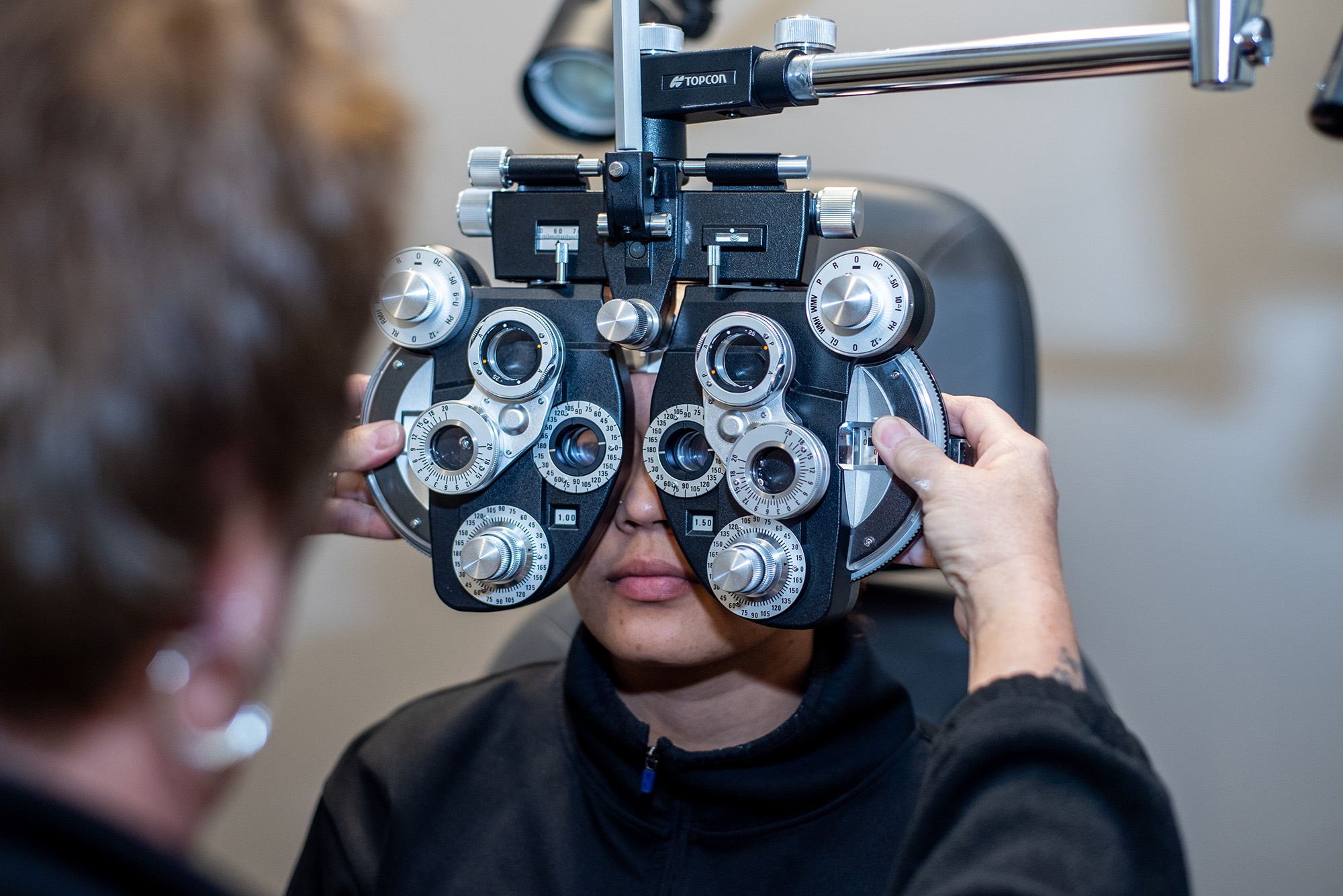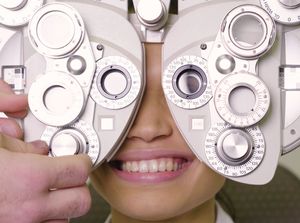Eye Examinations
Why should I get an eye exam?
The American Academy of Ophthalmology has established recommendations as to when you should begin and continue routine eye exams based on age and risk. A baseline screening can help identify signs of eye disease at an early stage when many treatments can have the greatest impact on preserving vision.

What should I expect to be checked at an eye exam?
A comprehensive eye exam is relatively simple and comfortable and shouldn’t take more than 60 to 90 minutes. The steps to complete a comprehensive eye exam include:
Your Medical History
The technical staff and your doctor will ask you a series of questions to assess your and your family’s medical and surgical history. This is important to determine what risks there may be for eye disease. It is important that you answer these questions completely. With ECVA’s patient portal you can provide your history securely ahead of your visit. It is also important that you list all of the medications you are taking.
Your Visual Acuity
The doctor’s staff will bring you to an exam room to perform acuity testing using equipment and a standardized eye chart to determine how well you see at various distances. The test is performed on one eye at a time by covering the eye not being tested.
Your Pupils
Time will be taken to examine your pupils to see how they respond to light by shining a bright beam of light through your pupils. Common pupillary reaction to this stimulus is to constrict (become smaller). If your pupils respond by dilating (widening) or there is a lack of response either way, this may indicate an underlying problem.
Your Side Vision
Glaucoma is a loss of vision that can sometimes occur without you even knowing it. Testing your side vision can identify eye problems that you aren’t even aware of.
Your Eye Movement
Your doctor will test the ocular motility of your eyes which evaluates the movement of your eyes. This tests for proper eye alignment and ocular muscle function. Common tests measure the eyes and their ability to move quickly in all directions and slowly track objects.
Your Prescription for Corrective Lenses
The staff and your doctor will view each eye through a device called a phoroptor, which contains different lenses. This tool provides information to help determine the best prescription for eye glasses or contacts. Refractive errors such as myopia or hyperopia are common refractive errors.
Your Eye Pressure
Tonometry, measures the pressure within your eye and is used as a screening test. Also known as intraocular eye pressure, or IOP, the test involves gently applying a pressure-sensitive tip called a tonopen near or against your eye. You may be given numbing drops for this test for your comfort.
The Front Part of Your Eye
A specialized microscope called a slit lamp is used to illuminate the front part of the eye, including the eyelids, cornea, iris and lens. This can reveal whether you are developing cataracts or have any scars or scratches on your cornea.
Your Retina and Optic Nerve
The technical staff may put drops in your eye to dilate, or widen, your pupil. The doctor will then be able to thoroughly examine your retina and optic nerve, located at the back of your eye, for signs of damage from disease. Your eyes might be temporarily sensitive to light for a few hours after they are dilated.
Other Testing
The doctor may suggest additional testing to further examine your eye using specialized imaging techniques such as OCT, topography or fundus photos. These tests can be crucial in diagnosing a disease in its early stages and allow your doctor to detect abnormalities in the back of the eye, on the eye’s surface or inside the eye.
The goal of the comprehensive eye exam is to provide your doctor with enough data to determine the health of your eyes. If you have any questions be sure to ask your doctor.

